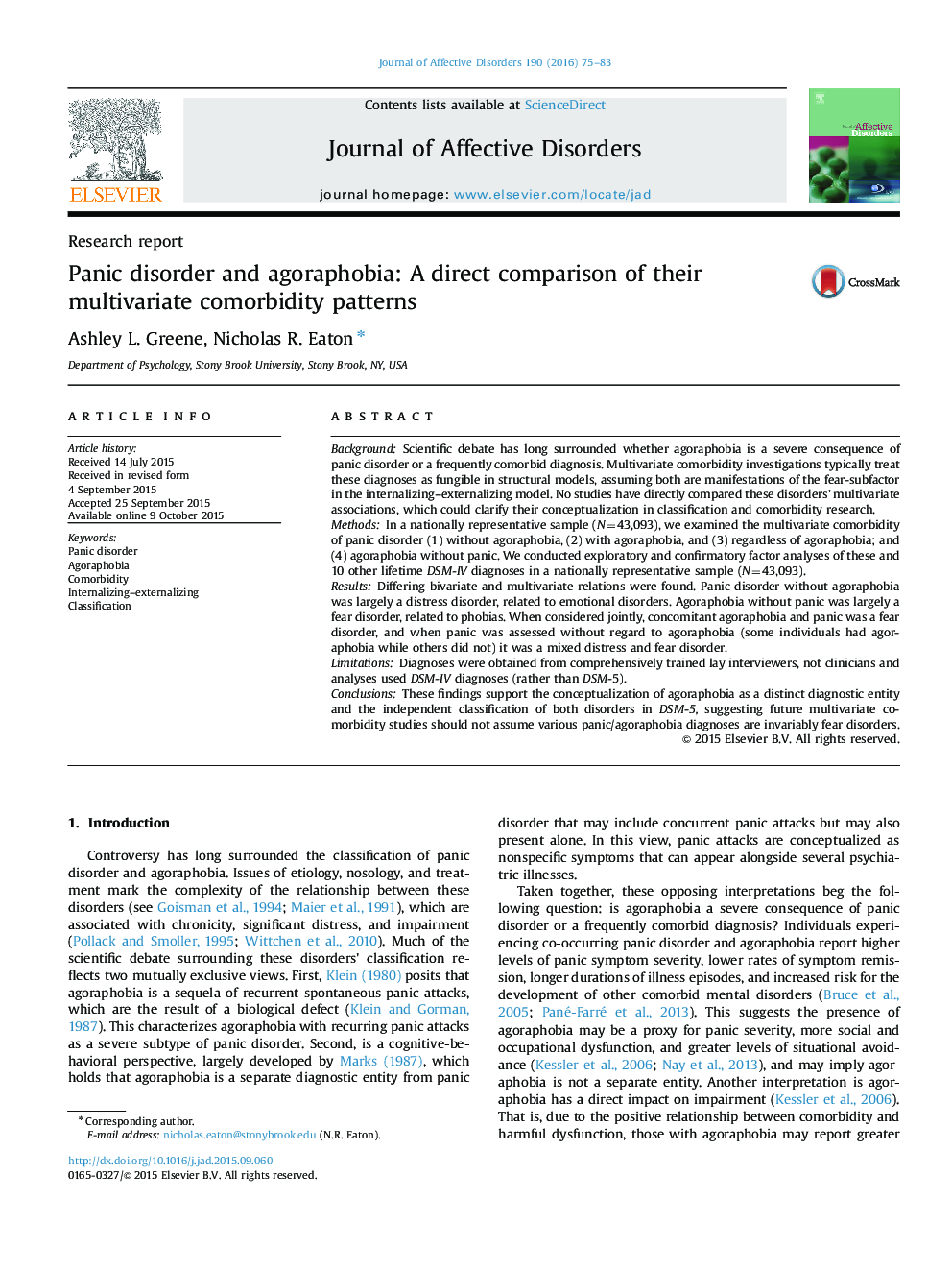| کد مقاله | کد نشریه | سال انتشار | مقاله انگلیسی | نسخه تمام متن |
|---|---|---|---|---|
| 6230653 | 1608135 | 2016 | 9 صفحه PDF | دانلود رایگان |
- We compared agoraphobia and panic disorder's multivariate comorbidity patterns.
- Panic disorder without agoraphobia was largely a distress disorder.
- Agoraphobia without panic was largely a fear disorder.
- Findings run contrary to past reports that both disorders are indicators of fear.
BackgroundScientific debate has long surrounded whether agoraphobia is a severe consequence of panic disorder or a frequently comorbid diagnosis. Multivariate comorbidity investigations typically treat these diagnoses as fungible in structural models, assuming both are manifestations of the fear-subfactor in the internalizing-externalizing model. No studies have directly compared these disorders' multivariate associations, which could clarify their conceptualization in classification and comorbidity research.MethodsIn a nationally representative sample (N=43,093), we examined the multivariate comorbidity of panic disorder (1) without agoraphobia, (2) with agoraphobia, and (3) regardless of agoraphobia; and (4) agoraphobia without panic. We conducted exploratory and confirmatory factor analyses of these and 10 other lifetime DSM-IV diagnoses in a nationally representative sample (N=43,093).ResultsDiffering bivariate and multivariate relations were found. Panic disorder without agoraphobia was largely a distress disorder, related to emotional disorders. Agoraphobia without panic was largely a fear disorder, related to phobias. When considered jointly, concomitant agoraphobia and panic was a fear disorder, and when panic was assessed without regard to agoraphobia (some individuals had agoraphobia while others did not) it was a mixed distress and fear disorder.LimitationsDiagnoses were obtained from comprehensively trained lay interviewers, not clinicians and analyses used DSM-IV diagnoses (rather than DSM-5).ConclusionsThese findings support the conceptualization of agoraphobia as a distinct diagnostic entity and the independent classification of both disorders in DSM-5, suggesting future multivariate comorbidity studies should not assume various panic/agoraphobia diagnoses are invariably fear disorders.
Journal: Journal of Affective Disorders - Volume 190, 15 January 2016, Pages 75-83
